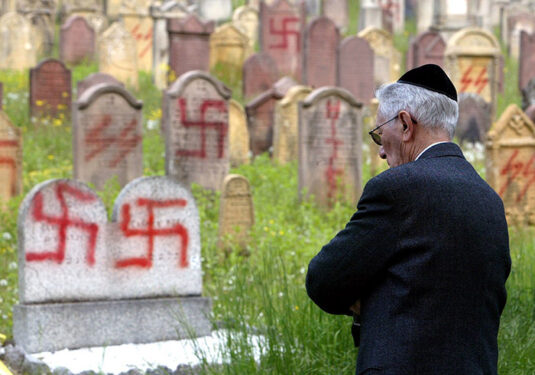
PROSPECT HEIGHTS — Attacks on Jewish people in New York City have spiked 375% in the first two months of 2022 compared to the same period last year, police statistics show. It’s an alarming number of incidents that have caught the attention of leaders in the Diocese of Brooklyn.
Nearly 2,000 years since the crucifixion of Jesus, concerns persist that some malicious people who hear the story of the Passion of the Christ during Lent might justify antisemitism, in thought or deeds.
The Ecumenical & Interreligious Affairs Commission of the Diocese of Brooklyn works to ensure no one confuses the Gospel message with doing the opposite, such as sucker-punching Hasidic teenagers on the street.
“The message of the Gospel — the love of God and the love of neighbor — of course, negates antisemitism,” said Sister Celia Deutsch, a member of the commission. “But we’re living in an age of really gross, mass intolerance. And any kind of intolerance is evil.”
Sister Celia is joined on the commission by its former chairman, Msgr. Guy Massie, and the current chairman, Father Michael Lynch, who also serves as the vicar for Ecumenical & Interreligious Affairs, and pastor of Our Lady of the Cenacle Parish in Richmond Hill, Queens.
Last year the panel developed a Lenten routine: Sharing resources built around three essays that remind priests to preach with context and clarity during Lent, Easter, and Pentecost to deter misinterpretations of the death and resurrection of Christ.
The commission hosted a Feb. 22 webinar on this topic.

“With a lack of explanation,” Msgr. Massie said, “you could see how a young person could go home and say, ‘You know, the Jews killed Christ.’ But what does that mean?”
Context, he added, is essential to distinguish between the Jewish leaders who conspired in the arrest of Jesus and thousands of other Jews who followed him.
They also noted it was the Roman government that ordered his execution.
Msgr. Massie said many Christians, including Catholics, see the Jews as a “monolithic group.”
“That wasn’t true then and it’s not true now,” he said. “We tend to look at Judaism as we tend to look at the Church — that all Jews are the same. But they’re not all the same. They’re all very different, as Catholics are different.”
Likewise, commission members warned against assuming all modern Catholics reject antisemitism.
“Sadly, the issue that we run into is priests in our generation who say, ‘Oh, everybody knows that already,’” Father Lynch said. “But we have to keep reminding people to love your enemies, to pray for those who hurt you, as Jesus always did.”
Hate-crime arrest reports don’t specify a suspect’s religion, so the potential can’t be quantified. Still, the members agreed that the possibility can’t be ignored; the diocese is a large community with an estimated 1.5 million members.
But, Sister Celia said, “Catholics, and non-Catholics, are humans.”
History has proof of that. As Christianity became more “gentile” these internal Jewish polemics became a Christian-Jewish debate. Consequently, the Jewish people were seen as enemies of Christians.
Anti-Jewish actions spanned the earliest days of the church, through the Middle Ages, and into the 20th century. History shows Jews were ostracized and forced to leave their countries. But once they resettled, many were violently persecuted, like in the pogroms of Eastern Europe and the Jewish Holocaust during the Second World War.
But later, leaders in the Roman Catholic Church took steps to improve relationships with Judaism.
The Second Vatican Council, under the leadership of Pope Paul VI, issued ‘Nostra Aetate 4’ and other documents reminding Catholics, including clergy, to present the Passion narratives in their historical context. Succeeding popes and the U.S. Conference of Catholic Bishops continued support of Nostra Aetate 4.
These efforts were praised by Rabbi Brad Hirschfield, president of the National Jewish Center for Learning and Leadership, based in New York City.
“I think it’s beautiful that there are people in the Church’s infrastructure who are concerned about this,” he said. “I don’t see or hear of priests, using the pulpits to teach the story of the Passion in a way that mobilizes antisemitic feelings, let alone actions.”
Rabbi Hirschfield, a longtime friend of Msgr. Massie, has collaborated on programs offered by the Ecumenical & Interreligious Affairs Commission. He was unable to participate in the Feb. 22 webinar because of a previous commitment.
He called the webinar “an opportunity to better understand why an issue that some of us think is so important was not so unimportant to the vast majority of our peers and colleagues.”
Rabbi Hirschfield said efforts by the Catholic Church “positions us to have an opportunity not just to repair the past, but to build a better future.”
“It took us 1,900 years and now most of us know that antisemitism is wrong,” he added. “What can we do for the next 19 months, in the next 19 weeks, to actively struggle against antisemitism?”
